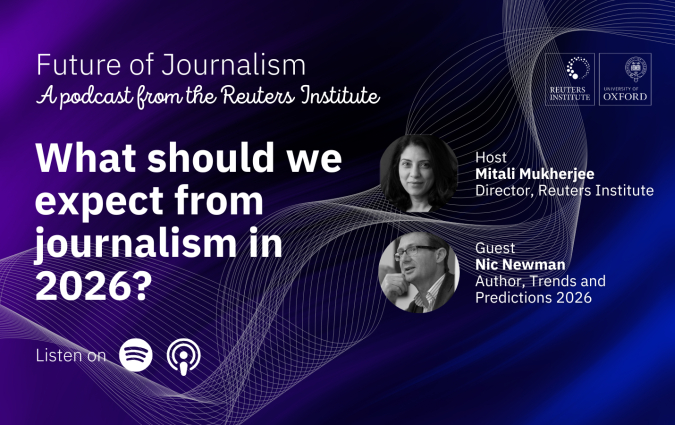These reader revenue models keep in mind people who won't pay full price (yet)

The newsroom of Spanish news organisation 'elDiario.es' in Madrid. © Elvira Megías from 'elDiario.es'
Reader revenue models are critical for many publications. In recent years, memberships and subscriptions have outstripped advertising revenues for the first time for some titles. The New York Times’ digital subscribers, for example, now account for 7.6 million, approximately 90% of its total subscriptions, with all subscriptions accounting for approximately 67% of its revenue as of the third quarter of 2021.
Almost half of news leaders (47%) surveyed by the Reuters Institute for the Study of Journalism last December said they were worried that subscription models may “super-serve” richer and more educated audiences. Some news outlets are experimenting with more inclusive models to ensure the news produced by news organisations isn’t just for those who can afford the entry fee.
South Africa’s Daily Maverick offers a “pay what you can afford” model, while Spain’s elDiario.es allows members to pay nothing at all. In Portugal, Público has offered free digital subscriptions to unemployed people, while Sweden’s Dagens Nyheter has flexed its paywall to attract younger and more geographically diverse audiences. While discounted subscriptions or memberships aimed at getting different audience groups into a pipeline are commonplace, we spoke to three news outlets trying to do memberships and subscriptions with inclusivity in mind.
Going younger and nationwide
Dagens Nyheter first introduced digital subscriptions in 2015 with its subscription products expanding in 2016-17. The newspaper doesn’t have one type of paywall, but rather a metered model, a premium model and a self-constructed dynamic model where the most visited articles go behind a wall three to four hours after they are published.
Where you are in your journey as a reader will affect where the paywall falls. While some limited content, such as live news articles may be free to access, the site offers five different subscription packages for fuller access, including print and digital combinations, digital-only and ad-free. There’s no lock-in period and the newspaper has initial discounts and shared family logins on several offerings.
In 2018, Dagens Nyheter conducted another experiment with its paid-for strategy. Aiming to attract younger readers, it offered every reader under 25 – first-time voters – a free subscription, opening the offer in May before the general election in September. In the three weeks before the vote, the scheme was opened up to all readers. No credit card details were taken. The day after the election and before cancelling the subscription, the paper asked the fee-free subscribers if they wanted to upgrade to a paying subscription.
“We knew we needed to provide a way for younger audiences to access editorial content because we had seen the developments in the US and other elections with fake news and propaganda,” says Martin Jönsson, editorial development director of Dagens Nyheter and Bonnier News. “We knew that would be an important issue in the Swedish election.”
Around 60,000 people signed up for the free offer and close to 30% were converted into paying subscribers in the following year. A deal on paid-for subscriptions was extended for this audience post-election too owing to a period of political uncertainty after the results. Dagens Nyheter has opened access in similar ways during other periods of breaking news or “uncertainty”, such as the Capitol riots in the US and during the COVID-19 pandemic. The latter resulted in 300,000 free registrations with 25% converted into paying subscribers later on.
“Our best content is behind the paywall, but audiences will never get to know the best content if they don't have the possibilities to try it out so we experiment with different models,” says Jönsson. The dynamic paywall does help to get new and younger people into the system and start forming habits: “We have grown a lot in younger audiences and also outside the local region [of Stockholm] into the entire country. We’ve opened up new regional offices, so getting people in different parts of Sweden to get acquainted with DN has been strategically very important for us.”
The flexible and experimental approach to paywalls and paid-for options allows the newspaper to target potentially excluded audiences. “You have to understand the phases you are in – growth, retention, monetisation – and your audience are in different stages of that as well,” says Jönsson. “It might be different depending on the competition, the economy or something like the pandemic. Sometimes it might be a good idea to raise the prices and sometimes it might be a very good idea to lower them.”
This focus on reader revenue and innovation is supported by cross-functional teams: everyone in the newsroom is responsible for the audience rather than a separate team. Operating in this way helps with decision-making and makes launching campaigns to attract new subscribers easier. In February 2020, for example, Dagens Nyheter decided to drop paywalled access to the site owing to COVID-19 coverage. The decision took less than 24 hours to implement. “If we had waited a week, we would never have got the same impact. All our competitors were slower,” says Jönsson.
In 2015, the newspaper had around 2,000 digital-only subscribers; now it has around 250,000 and a further 130,000 subscribing to print and digital combined. Reader revenues account for 78% of revenue. A clear majority of its subscribers are outside of Stockholm and the profile has shifted to include more women and young people. “Dagens Nyheter has a history of being a Stockholm paper, the paper of the capital,” says Jönsson. “In order to grow digital subscriptions, we have to grow nationwide. That’s why we’re opening new offices: to attract subscribers throughout the whole country by doing better reporting from the whole country.”
An ethical approach
Founded in 2009, South Africa’s Daily Maverick continues to reject paywalls in a commitment to a more inclusive, reader-supported model – a decision taken early by the newsroom’s founders.
“South Africa is such a poor country,” says Francesca Beighton, general manager of Maverick Insider, the news title’s membership programme. “[If we introduced a paywall] we would have been sustainable within a few months but our journalism is impact journalism. It’s about influencing big decision-makers and holding them accountable. In a country with a huge volume of voters, hiding the truth behind a paywall would affect the democracy of the country.”
The title offers a sliding scale of payment from R75 (just under $5) to R350+ (just under $23) a month or from R900 (just under £46) to R4,200+ (just under £213) annually to become a Maverick Insider, allowing readers to decide how much they wish to contribute. Those who sign up for R200 or more a month receive an additional benefit – the equivalent amount in Uber vouchers. Beighton says other options have also been devised for pensioners and young people who have contacted Insider, and people in places where Uber doesn’t operate.
“If the R75 coming in once a month is all somebody can afford, is that any less worthy than R200 in terms of what that Insider might bring us?” says Beighton. “They might tell their friends, they might contribute to surveys. It becomes so much more than a transaction, it’s personal, it’s a relationship.”
According to the World Bank, South Africa is the most unequal country in the world with 10% of the population owning 80% of the wealth. “A lot of members understand that not everybody can afford this and they want them to be able to see the truth,” says Beighton. “They want the betterment of the country.”
This model has attracted 24,500 Maverick Insiders, with a slight majority paying more than R200 a month. Benefits beyond supporting Daily Maverick’s journalism include ad-free browsing, opportunities to engage with journalists and commenting on articles. Issues with credit cards expiring and a lack of automatic renewals – popular online payment processing platform Stripe is unavailable in South Africa – has led to some Insiders being lost, but 17,100 members are currently active (though this number fluctuates on a daily basis). The team is looking to introduce direct debit to reduce involuntary churn.
Reader revenue in general, both membership and reader donations, accounts for around 32% of Daily Maverick’s revenue. The goal for this year is 26,000 active Insiders. Beighton says her team spends most of its time making sure Insiders know their importance to the newsroom and working hard to retain Insiders as they can cancel at any time. The Insider audience is very diverse, says Beighton, adding that the income bracket may be higher: “In a country where we have such income disparity, anyone who can afford to pay for the news is earning.” As such, offering more affordable membership prices keeps the community and participation in member events, such as debates with experts from within the Insiders community, more diverse too.
A different relationship
Spanish news site elDiario.es, founded in 2012, also believes that a more emotional relationship with audiences is critical to growing membership, reader revenues and more inclusive models.
“We work on a more emotional level which is why our potential members are our most loyal readers,” says Esther Alonso, marketing and development director at elDiario.es. “We don’t convert sporadic readers into members in one day. Loyals have spent a long process of getting to know us better.”
Members can pay €8 monthly (around $8.5) or €80 annually (around $85) or set a higher fee voluntarily. The site uses metered paywall technology to help nudge loyal audiences to become a supporter, for example, by sending a membership pop-up once a reader has consumed more than 10 articles for free in a month. The message, which has undergone A/B testing, says: “You like our journalism and it needs you.” From that point, a reader has to become a member to access more articles.
In December 2020, editor Ignacio Escolar announced a new feature: “[W]e will leave the door open for all those who cannot pay (...) We're not going to control readers who say they can't afford to spend $8 a month. We are not going to check if they are really unemployed (...) We trust our community[.]”
Readers can now select “I can’t pay”, with students, unemployed people, those on government furlough schemes or those with low income encouraged to choose a free or reduced fee option. “Our content is open so we had to offer the free option because we didn’t want to leave anyone behind,” says Alonso. “If you can’t afford it, you are still important to our community and we still want you to read us. You could consider them as registered users but the concept is different: they are loyal readers who can’t afford this at the moment.”
Since the launch of the new model, nearly 21,700 members have signed up using the free option. Overall, the site has almost 61,000 paying members including 3,600 who are paying a reduced fee of between €1 and €7 a month and almost 7,000 paying even more than the full price. In total, 50% of the newsroom’s revenue comes from readers and 50% from advertising.
Alonso says the response from readers and existing members has been positive: “They completely understood what we were doing. All Spanish media are going for subscriptions. We really need to move fast without compromising our membership model. Our readers were happy that even though we use paywall technology, we didn’t close our content.”
Despite offering a free option, paid-for memberships have continued to grow, again thanks to a “more emotional than transactional” relationship with audiences. “I think our loyal readers and those who become members are sympathetic to our model. They know this is not about sales and that we need the full amount, if possible,” says Alonso. “With membership rather than subscriptions you can have a different conversation with your audience.”
Testing a more inclusive membership option for loyal readers is both a statement of intent from elDiario.es and gives its reader-funded model future flexibility: the site can use these options to retain existing members who might need to leave in the future because of a change in economic circumstances. As the Spanish economy starts to recover, Alonso says messaging to members who have taken the free or discounted option may become “a bit more direct”. “We have started to ask them carefully if they can afford a fee. It can be €1 (a bit more than $1) a month. But only if they can afford it, because we need them. We thank our members all the time for their support. It's important that everyone in our community of readers understands what our business model is and why membership is so important,” she says.
The decision to make its membership model more inclusive reflects elDiario.es' commitment to a different approach to funding and reader relationships than some legacy media. It’s a commitment that Alonso believes gives a competitive edge – the site ranked third in weekly online reach amongst Spanish news sites in 2021: “Our resources are very small compared to our competitors but we are [competitive] because our growth strategy is clear and we are very conservative in terms of investment.
The title publishes its annual results every year with a blog post from the editor and founder Escolar detailing the organisation’s growth and challenges, including where revenue has come from and how it is reinvested in the newsroom. According to that year’s blog post, 2020 was the year that reader contributions “saved” elDiario.es and contributions from readers more than doubled from the previous year to €4.5 million (£3.85 million).
“We’re not scared to experiment, but the risks we take are very contained because we don’t have the money to go crazy,” she says. “We have managed to reach a high position within the Spanish audience because we are very faithful to our model and we are very transparent. We don’t go after clicks. We are independent – only the founders are behind elDiario.es and they work in the newsroom.”
A better understanding of loyalty
Asking readers to be transparent about what they can pay to support an outlet’s journalism reflects a broader commitment to transparency from these newsrooms and can contribute to the more human, less transactional, relationship with readers that is prioritised by the newsrooms interviewed for this piece.
“COVID-19 was a great example of why a reader revenue model can work,” says Daily Maverick’s Beighton. “When businesses closed and didn't have the funds for advertising to support you, we were able to keep going because of our Insiders.”
This more personal relationship influences how new products are developed and funded too. If Maverick Insiders want a new app, the newsroom will work out how many memberships are needed to fund it rather than looking into external funding.
Experimenting with more flexible models has given these newsrooms additional valuable insights into loyal readers’ behaviours. When reaching into new markets, for example, Jönsson says Dagens Nyheter has learned that it is better to get readers on board with a small sum, maybe for several years, and have them as customers before gradually raising prices or adding new benefits and bundles. Churn patterns are different depending on the length of loyalty, with a low churn rate for people who have subscribed to the site for 2-3 years and a higher churn amongst new subscribers.
More inclusive and flexible membership options can redefine what is meant by a loyal reader to include potential loyal readers who are at different stages of their relationship with a news brand.
“The problem with paywalls is not just the ethical issues within a country like South Africa, but the fact that you are not allowing your potential fans to read what you have to offer before you cut them off,” says Beighton. “Two articles won’t create that loyalty. We wanted to create a sense of community because we knew we couldn’t do it alone.”
Laura Oliver is a freelance journalist based in the UK. She has written for the Guardian, BBC, The Week and more. She is a visiting lecturer in online journalism at City, University of London, and works as an audience strategy consultant for newsrooms. You can find her work here.
In every email we send you'll find original reporting, evidence-based insights, online seminars and readings curated from 100s of sources - all in 5 minutes.
- Twice a week
- More than 20,000 people receive it
- Unsubscribe any time






